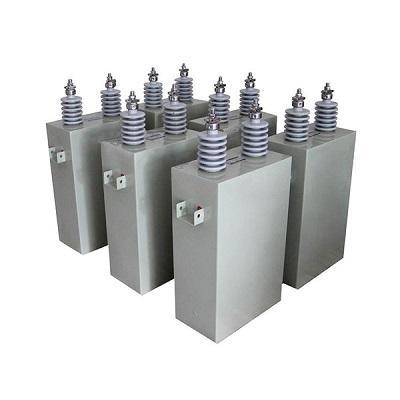The installation method of high-voltage power capacitors is to determine the installation location, install brackets, connect cables, ground the capacitors, adjust capacitor parameters, connect protection devices, test and debug.
(1) Determine the installation location: Power capacitors are usually installed in power distribution equipment or capacitor cabinets in power systems. The installation location needs to be determined and sufficient space must be ensured.
(2) Installation bracket: According to the size and weight of the capacitor, install an appropriate bracket or shelf to support the capacitor and ensure that the bracket is stable and reliable.

(3) Connecting cables: Connect the input and output cables of the capacitor according to the wiring requirements of the capacitor, ensuring that the cable connection is firm and the insulation is good.
(4) Grounding: Ground the capacitor to ensure that the grounding resistance meets the requirements to improve safety and protect the capacitor from electrical interference.
(5) Adjust capacitor parameters: According to the needs of the actual power system, adjust the parameters of the capacitor, such as capacity, voltage, etc., to ensure its normal operation.
(6) Connect protection devices: As needed, connect capacitor protection devices, such as overvoltage protection, overcurrent protection, etc., to ensure that the capacitor can be effectively protected under abnormal conditions.
(7) Testing and debugging: After the installation is completed, the capacitors are tested and debugged to ensure their normal operation and meet the requirements of the power system.
(8) Safety signs: Set safety signs near the capacitor to remind personnel to pay attention to safety and avoid misoperation or accidents.
1) To save installation area, high-voltage power capacitors can be installed in layers on the iron frame, but the number of vertical layers should not exceed three, and horizontal layer partitions should not be installed between layers to ensure good heat dissipation. The upper, middle, and lower layers of capacitors should be installed in the same position, with the nameplate facing outward.
2) The iron frames for installing high-voltage power capacitors are arranged in one or two rows. There should be walkways for inspection between rows. The width of the walkway should be no less than 1.5m.
3) The iron frame of the high-voltage capacitor bank must be blocked by barbed wire, and the mesh openings of the blocking should be 3 to 4 cm2.
4) The distance between the shells of high-voltage power capacitors should generally not be less than 10cm; the distance between the shells of low-voltage capacitors should not be less than 50mm.
5) In the high-voltage capacitor room, the clear distance between the upper and lower floors should not be less than 0.2m; the distance between the bottom of the lower capacitor and the ground should not be less than 0.3m.
6) The connection between each capacitor and the busbar should be a separate soft wire. Do not use a hard busbar connection to avoid stress on the porcelain bushing during installation or operation, causing oil leakage or damage.
7) During installation, the contact surface between the electrical circuit and the grounding part must be good. Any bad contact in the capacitor circuit may produce a high-frequency oscillating arc, causing the capacitor's working electric field intensity to increase and causing thermal damage.
8) When lower-voltage capacitors are connected in series and run in a higher-voltage network, measures such as adding insulators equivalent to the operating voltage level should be installed between the shells of each unit and the ground to ensure reliable insulation.
9) When the capacitor is connected to the star connection and is used for a higher rated voltage and the neutral point is not grounded, the outer shell of the capacitor should be insulated from the ground.
10) Before installing high-voltage power capacitors, the primary capacitance must be distributed so that the phases are balanced, and the deviation does not exceed 5% of the total capacity. When a relay protection device is installed, it should also meet the requirement that the balance current error during operation does not exceed the relay protection operating current.
11) The wiring of individual compensation capacitors should be as follows: for induction motors that are started directly or through a rheostat, the capacitor to improve the power factor can be directly connected to the outlet terminal of the motor, and no switching equipment or fuses should be installed between the two. For induction motors started by star-delta starters, it is best to use three single-phase capacitors, each capacitor is directly connected in parallel to the two terminals of each phase winding so that the wiring of the capacitor is always consistent with the connection of the winding. consistent.
12) The group compensation low-voltage capacitor should be connected outside the low-voltage group bus power switch to prevent self-excitation when the group bus switch is disconnected.
13) The low-voltage capacitor bank for centralized compensation should have a dedicated switch and be installed outside the main switch of the line instead of being installed on the low-voltage busbar.